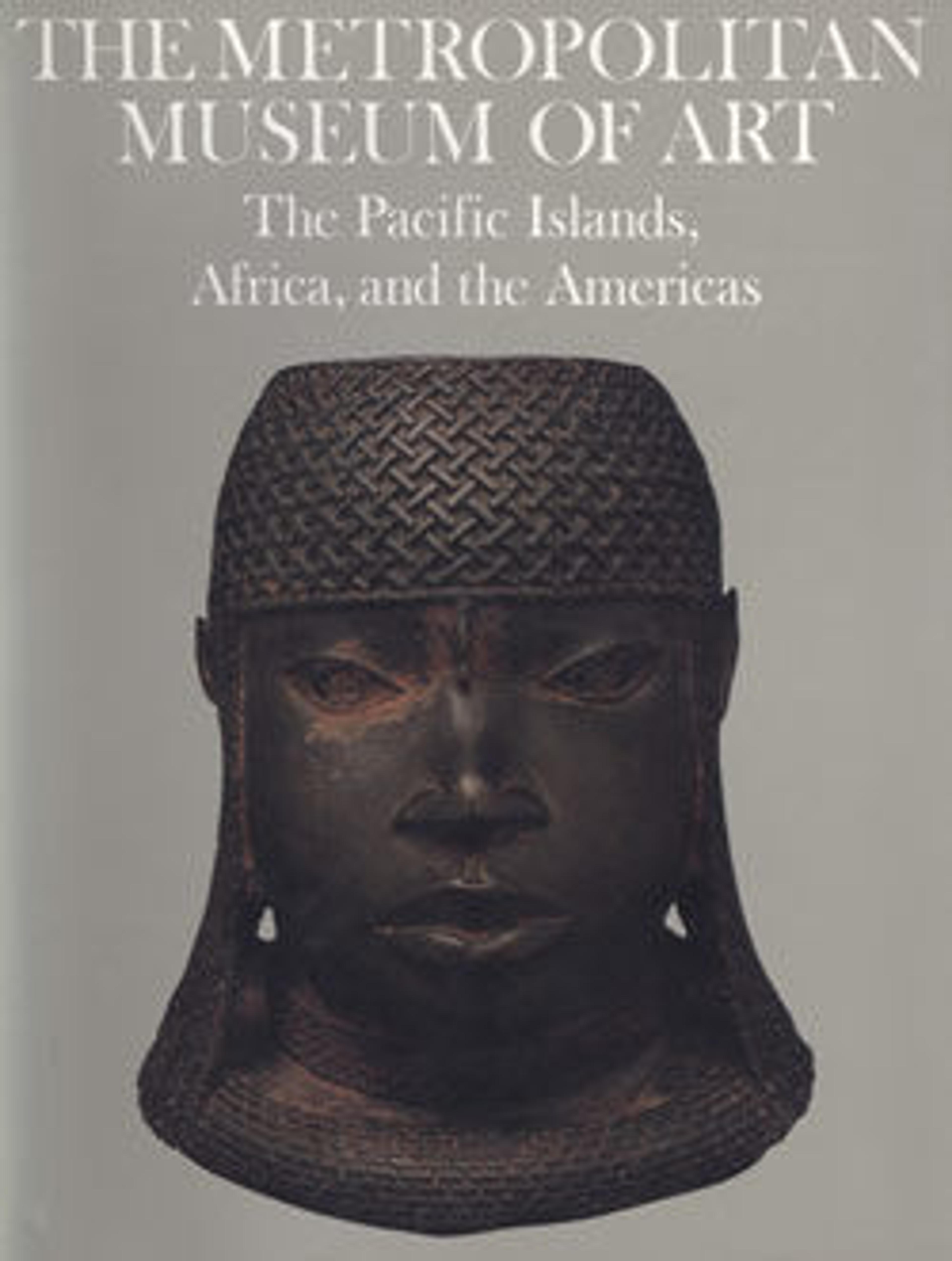Face mask
In Liberia’s coastal communities, masks with one or more pairs of dramatically projecting eyes expressed the intensity and heightened perception of the ideal warrior. The bared teeth are further accentuated with traces of blue pigment. Likely carved by the men who owned them, such works may have appeared in battle or during mortuary, juridical, or initiation rites. Concealed beneath a full costume of raffia fibers, the performer of this refined example would have peered through the holes on either side of the mask’s nose.
During the nineteenth century, Kru and other West African men employed in the European shipping industry carried their mask forms to ports extending from Liberia to Cameroon. The striking tubular eyes that define this tradition, associated with Kru and Grebo warriors, may relate to those of water-spirit masks performed by Ijo communities down the Atlantic coast. "Krumen," as these ship workers came to be known, also created versions for export. Two related masks entered the collection of Pablo Picasso, who was taken with their bold composition. He famously credited their ocular projections as the inspiration for the sound hole at the center of his groundbreaking 1912 sculptural collage Guitar. Similarities are also apparent between the discrete forms of Kru masks and Guitar’s composite construction.
During the nineteenth century, Kru and other West African men employed in the European shipping industry carried their mask forms to ports extending from Liberia to Cameroon. The striking tubular eyes that define this tradition, associated with Kru and Grebo warriors, may relate to those of water-spirit masks performed by Ijo communities down the Atlantic coast. "Krumen," as these ship workers came to be known, also created versions for export. Two related masks entered the collection of Pablo Picasso, who was taken with their bold composition. He famously credited their ocular projections as the inspiration for the sound hole at the center of his groundbreaking 1912 sculptural collage Guitar. Similarities are also apparent between the discrete forms of Kru masks and Guitar’s composite construction.
Artwork Details
- Title: Face mask
- Artist: Kru artist
- Date: 19th–first half of 20th century
- Geography: Côte d'Ivoire or Liberia, Cape Palmas region
- Culture: Kru peoples
- Medium: Wood, kaolin, pigment
- Dimensions: H. 28 × W. 8 × D. 6 in. (71.1 × 20.3 × 15.2 cm)
- Classification: Wood-Sculpture
- Credit Line: The Michael C. Rockefeller Memorial Collection, Bequest of Nelson A. Rockefeller, 1979
- Object Number: 1979.206.7
- Curatorial Department: The Michael C. Rockefeller Wing
More Artwork
Research Resources
The Met provides unparalleled resources for research and welcomes an international community of students and scholars. The Met's Open Access API is where creators and researchers can connect to the The Met collection. Open Access data and public domain images are available for unrestricted commercial and noncommercial use without permission or fee.
To request images under copyright and other restrictions, please use this Image Request form.
Feedback
We continue to research and examine historical and cultural context for objects in The Met collection. If you have comments or questions about this object record, please contact us using the form below. The Museum looks forward to receiving your comments.
